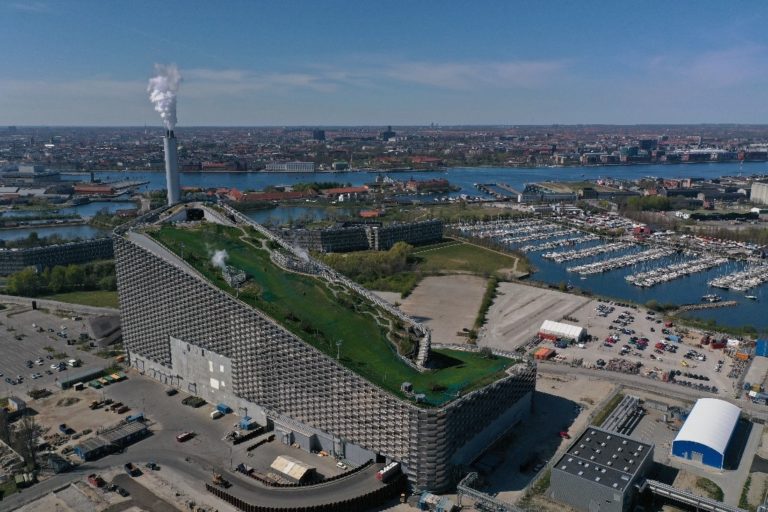Waste-to-Energy & the City: Generating Value for Cities
A journey to showcase the benefits that Waste-to-Energy plants bring to Cities.

Waste management is a pressing challenge for cities worldwide, and European cities have been at the forefront of innovative solutions to tackle this issue. One such solution that has gained momentum in recent years is Waste-to-Energy (WtE).
WtE is already recognised, worldwide, as an advanced and reliable technology for treating that fraction of municipal and similar waste produced by households and industries that cannot be (further) recycled, and for helping cities reduce the volume of waste sent to landfills, while generating clean energy, contributing to sustainability goals and fostering a circular economy.
Keep reading to discover the benefits WtE plants offer to communities and to find out the hidden potential of this technology.
Landfill diversion: another way to say “pollution prevention”.
The European Union (EU) has set very ambitious targets in terms of landfill reduction; less than 10% of municipal waste to be landfilled by 2035. Hence, every solution that helps reach the EU’s target is to be preferred. Landfilling is considered in the European waste hierarchy the least preferred solution for waste management. By diverting waste from landfilling to WtE, soil and groundwater pollution is drastically reduced with the decrease of harmful chemicals released in the atmosphere and water.
When it comes to WtE, it is worth mentioning that EU regulations and national legislation have set very stringent emission limits for the sector. This ensures that air quality remains high and that emissions are minimised, addressing concerns related to public health and environmental impacts.
With pollution prevention as a core service, WtE plants are not only integrated into the communities but in some cases, they even represent an improvement.
In Copenhagen, for example, Amager Bakke’s Waste-to-Energy plant is also known as “CopenHill”, because it culminates at 100 meters with an accessible rooftop covered with vegetation. CopenHill, therefore, not only burns waste but also offers a spot where people can meet, have fun, and even ski or snowboard thanks to a newly installed slope.

(Bird-eye view of the Amager Bakke’s Plant in Copenhagen, Denmark)
Let’s not forget the energiser power of WtE plants and keep reading to learn how tens of thousands of households in Copenhagen, and all around the globe, take advantage of this technology.
Energy recovery: how WtE energises our cities
WtE plants transform non-recyclable waste into energy in the form of heat, steam, electricity, and fuels, which are then distributed to end-users. This clean energy source reduces cities’ reliance on fossil fuels and helps meet renewable energy targets.
In many EU cities, WtE already covers more than half of the energy demand powering and heating not only private houses, but offices, schools, hospitals, and industries.
The conversion of waste into energy perfectly fits the European Union’s idea of establishing a fully circular economy, but more on this in a few seconds. Furthermore, the energy produced by WtE plants serves as a valuable complement to other renewable energy resources, such as wind and solar, which are not always available and fully dependable.
Relying on a more secure energy source can help strengthen the European energy security and avoid the price hikes that challenged many households since the beginning of the energy crisis associated with the Russian invasion of Ukraine.
Climate change mitigation: unleashing WtE’s GHG reduction potential
Did you know that WtE acts as a carbon sink? In addition to the GHG emission savings from fossil fuel substitution, WtE also mitigates potent emissions by diverting waste from landfills and recycling the leftovers of the combustion process.
As recognised by the IPCC in April 2022, “When WTE technologies are equipped with proper air pollution reduction facilities they can contribute to clean electricity production and reduction of GHG emissions.”
On top of that, numerous European WtE plants are exploring Carbon Capture Usage and Storage (CCUS) technologies, which have the potential to further reduce the carbon footprint of the sector or even to make it carbon-negative!
Closing the loop: WtE’s role in circular economy
European cities are embracing the principles of the circular economy, where resources are reused, recycled, and recovered. Waste-to-Energy fits into this framework by extracting value from waste that might otherwise be discarded. The heat generated during the incineration process can be used for district heating, further enhancing energy efficiency.
Material recovered from waste (metals, minerals, aggregates) is given a second life in the production cycle. This reduces the strain on finite natural resources and significantly decreases the environmental and climate impact of both extracting and manufacturing processes.
Carbon captured from WtE plants can be used to produce materials and fuels, and also in many other applications, including greenhouses.
And all that, while keeping the food chain intact, since WtE does not use food crops for bioenergy production.
Empowering communities: job creation and shaping public perception
Investing in waste-to-energy infrastructure not only improves waste management but also stimulates local economies. The construction, operation, and maintenance of these facilities create jobs, support communities, and foster economic growth.
What is more, public acceptance of waste incineration has improved in recent years, largely due to advancements in technology and increased environmental awareness. Cities are now focusing on transparent communication and community engagement to build trust and ensure that Waste-to-Energy projects are well-received by residents.
Last but not least, we can all make our contribution to a better and cleaner future, let’s find out how and why.
Conclusion: “Waste-to-Energy? Yes-in-my-backyard”!
There is a long list of benefits that a WtE plant can bring to cities. In this article, we have decided to highlight the ones that oftentimes are taken for granted but from which we all benefit in our daily lives.
In Europe, currently, there are already more than 500 operating plants, some of which are located in many important European cities, including Paris, Dublin, Vienna, Copenhagen, and Barcelona, and they are also very well-integrated with their surroundings. By turning trash into treasure through clean energy generation, these cities are setting an example for sustainable urban development while mitigating the challenges associated with growing waste volumes. As technology continues to advance, Waste-to-Energy is likely to play an even more significant role in Europe’s sustainable future.
It’s important to raise awareness around this technology not only because of the many reasons listed above but also because there is a call for everybody: we are all required to do our part in fighting climate change and it’s our duty, as world citizens, to respond to this call.
In May 2023, ESWET held a conference with the EU Committee of the Regions on the topic of “Waste-to-Energy & the City: generating value for Communities”. For more information about the Conference, please visit ESWET’s page here.


